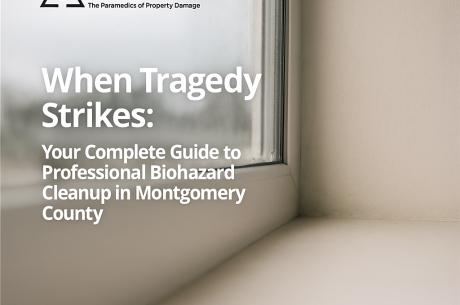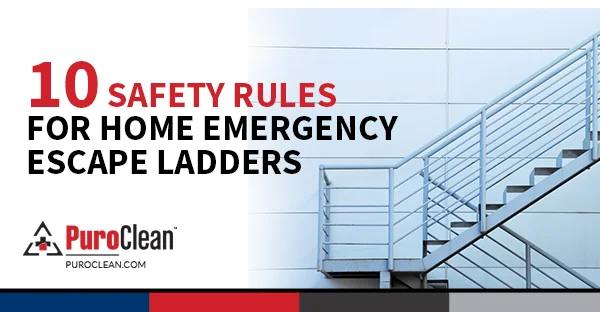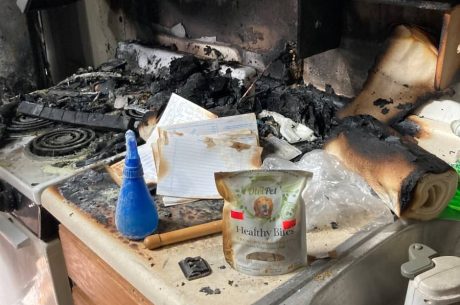Table of Contents
Disasters don’t announce their arrival. Whether it’s a hurricane barreling toward the coast, an earthquake striking without warning, or a winter storm knocking out power for days, the difference between chaos and control often comes down to one thing: preparation.
This comprehensive guide will walk you through everything you need to know about protecting your home and family from emergencies. From creating supply kits to weatherproofing your property, you’ll learn practical steps that could save lives, minimize damage, and provide peace of mind when disaster strikes.
Understanding Your Risk Profile
Before you can prepare effectively, you need to understand what you’re preparing for. Different regions face different threats, and your preparation strategy should reflect your specific risks.
Assess Your Local Hazards
Start by identifying the most likely disasters in your area. Coastal residents face hurricanes and flooding. Those in the Midwest must prepare for tornadoes. Western states contend with wildfires and earthquakes. Northern regions deal with severe winter storms and power outages.
Check FEMA’s National Risk Index or your local emergency management website to understand your community’s specific vulnerabilities. Don’t forget about man-made disasters like chemical spills or infrastructure failures, which can happen anywhere.
Know Your Property’s Vulnerabilities
Walk around your home with a critical eye. Is your roof in good condition? Are there trees that could fall on your house? Does water pool near your foundation? Is your home in a flood zone or wildfire interface area? Understanding these vulnerabilities helps you prioritize improvements and preparations.
Building Your Emergency Supply Kit
A well-stocked emergency kit is the cornerstone of disaster preparedness. You should have supplies to sustain your household for at least 72 hours, though a two-week supply is ideal for major disasters.
Water: Your First Priority
Store one gallon of water per person per day. For a family of four, that’s 12 gallons for three days or 56 gallons for two weeks. Use food-grade water containers and replace stored water every six months. Consider additional water for pets, cooking, and hygiene.
Food Storage Essentials
Stock non-perishable foods that require no refrigeration or cooking. Good options include canned goods, dried fruits, nuts, granola bars, peanut butter, crackers, and shelf-stable milk. Don’t forget a manual can opener. Rotate your food supplies annually, using and replacing items before they expire.
First Aid and Medications
Assemble a comprehensive first aid kit including bandages, gauze, antibiotic ointment, pain relievers, antiseptic wipes, tweezers, scissors, and a thermometer. Keep a 30-day supply of prescription medications if possible, and include copies of prescriptions and medical information. Add any special medical equipment your family needs, such as glasses, hearing aid batteries, or mobility aids.
Tools and Safety Equipment
Your kit should include flashlights with extra batteries, a battery-powered or hand-crank radio, a multi-tool or Swiss Army knife, duct tape, plastic sheeting, work gloves, a fire extinguisher, matches in a waterproof container, and a whistle for signaling help.
Important Documents
Create waterproof copies of essential documents: insurance policies, property deeds, birth certificates, passports, bank account information, and medical records. Store originals in a fireproof safe and keep digital copies on an encrypted USB drive in your emergency kit.
Personal Items and Comfort
Include cash in small bills, local maps, phone chargers and backup batteries, personal hygiene items, blankets or sleeping bags, extra clothing, and items for infants, children, or elderly family members. Don’t forget supplies for pets, including food, water, medications, and carriers.
Home Hardening: Physical Preparations
Protecting your property before disaster strikes can significantly reduce damage and repair costs.
Structural Improvements
Install storm shutters or plywood panels for windows. Reinforce your garage door, often the weakest point in high winds. Secure your roof with hurricane straps or clips. Bolt bookcases, water heaters, and other tall furniture to wall studs to prevent toppling during earthquakes. Trim trees and remove dead branches that could fall on your home.
Fire Prevention
Create defensible space around your home if you live in wildfire-prone areas. Clear vegetation within 30 feet of structures, use fire-resistant building materials for roofs and siding, install ember-resistant vents, and keep gutters clear of debris. Store firewood and propane tanks at least 30 feet from structures.
Flood Protection
If you’re in a flood-prone area, consider installing a sump pump with battery backup, seal basement walls with waterproofing compounds, install check valves in plumbing to prevent backflow, elevate utilities and HVAC equipment, and keep sandbags or flood barriers on hand.
Utility Safeguards
Know how to shut off your gas, water, and electricity. Label shutoff locations clearly and keep necessary tools nearby. Consider installing automatic gas shutoff valves that activate during earthquakes. Have a licensed electrician install a transfer switch if you plan to use a generator.
Creating Your Family Emergency Plan
Having supplies means nothing if your family doesn’t know what to do when disaster strikes.
Communication Strategy
Designate an out-of-state contact person who can serve as a central communication point. Local phone lines may be overwhelmed during disasters, but long-distance calls often work. Ensure every family member has this contact information memorized and written down.
Evacuation Planning
Identify multiple evacuation routes from your home and neighborhood. Plan where you’ll go a friend’s house, hotel, or emergency shelter. Keep your vehicle’s gas tank at least half full and have an emergency car kit. Practice evacuation drills with your family, including pets.
Shelter-in-Place Procedures
Some disasters require staying home. Choose a safe room in your house typically an interior room on the lowest floor with no windows. For tornados, this could be a basement or bathroom. For chemical emergencies, seal the room with plastic sheeting and duct tape. Know when to shelter in place versus evacuate.
Special Considerations
Plan for family members with disabilities or special needs. Consider how you’ll care for pets, as many emergency shelters don’t accept animals. Identify pet-friendly hotels or boarding facilities along evacuation routes. Make arrangements for elderly family members who may need assistance.
Insurance and Financial Protection
Proper insurance coverage can mean the difference between recovery and financial ruin.
Review Your Homeowner’s Insurance
Standard policies typically cover wind damage, fire, and theft, but often exclude floods and earthquakes. Review your coverage limits and understand your deductibles. Consider increasing coverage if your home’s value has risen. Document your possessions with photos or video for insurance claims.
Flood Insurance
If you’re in a flood zone, you need separate flood insurance through the National Flood Insurance Program or private insurers. Even if you’re not in a high-risk area, consider coverage more than 20% of flood claims come from moderate-to-low risk areas. Note that flood policies typically have a 30-day waiting period.
Earthquake and Other Specialty Coverage
If you live in an earthquake-prone region, earthquake insurance is essential. Some areas may need separate coverage for hurricanes, wildfires, or sinkholes. Review what’s covered and what’s excluded carefully.
Financial Preparedness
Maintain an emergency fund covering three to six months of expenses. Keep copies of financial documents in your emergency kit. Consider a home equity line of credit as a financial safety net. Take photos and video of your home’s contents and store them securely off-site.
Maintaining Your Preparedness
Emergency preparation isn’t a one-time task it requires regular maintenance and updates.
Regular Reviews
Check your emergency supplies every six months. Replace expired food, water, medications, and batteries. Update documents and contact information. Test smoke detectors, carbon monoxide detectors, and fire extinguishers. Review your insurance policies annually.
Stay Informed
Sign up for local emergency alerts through your community’s notification system. Download weather apps and enable emergency alerts on your phone. Follow local emergency management on social media. Attend community preparedness meetings or CERT (Community Emergency Response Team) training.
Practice and Drill
Conduct fire drills twice a year. Practice your evacuation plan annually. Review shelter-in-place procedures with your family. Make sure everyone knows where the emergency kit is and how to use its contents.
Adapt to Changes
Update your plan when family situations change new babies, aging parents, new pets, or someone developing medical needs. Reassess your risks if you move or if local conditions change. Adjust your supplies for seasonal needs.
Community Preparedness
Your safety often depends on your neighbors, and theirs on you.
Know Your Neighbors
Build relationships with people on your street. Share emergency contact information. Identify neighbors who might need help during emergencies elderly residents, those with disabilities, or families with young children.
Community Resources
Locate your nearest emergency shelter, hospital, police station, and fire station. Identify community resources like emergency supply distribution points. Join or start a neighborhood preparedness group.
Get Trained
Take a first aid and CPR course. Consider CERT training to learn disaster response skills. Attend fire safety classes offered by your local fire department. Learn amateur radio operation if you want to provide emergency communications.
After the Disaster: Recovery Planning
Knowing what to do after disaster strikes is as important as preparation.
Immediate Safety
Don’t return home until authorities say it’s safe. Watch for structural damage, gas leaks, and downed power lines. Document damage with photos before cleanup. Be cautious of contaminated water and food.
Beginning Recovery
Contact your insurance company immediately to start the claims process. Keep detailed records of all expenses related to the disaster. Save receipts for emergency purchases and temporary housing. Make temporary repairs to prevent further damage, but photograph everything first.
Long-Term Resilience
Apply lessons learned to improve your preparedness. Consider rebuilding with more resilient materials and methods. Invest in improvements that reduce future risk. Continue building your emergency fund to handle future deductibles and uncovered expenses.
Final Thoughts
Emergency preparedness isn’t about living in fear it’s about living with confidence. When you’ve taken steps to protect your home and family, you gain peace of mind knowing you can handle whatever comes your way.
Start small if needed. You don’t have to do everything at once. Build your emergency kit gradually, make one home improvement at a time, and practice your family plan step by step. The important thing is to start today.
Disasters will happen. The question isn’t if, but when. By preparing now, you’re not just protecting property you’re protecting what matters most: the safety and wellbeing of your family. That’s worth every bit of effort you invest in being ready.
Remember: hope for the best but prepare for the worst. Your future self will thank you.


